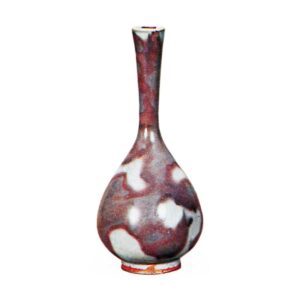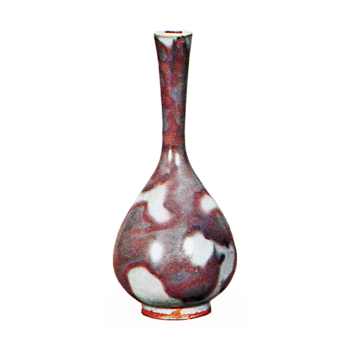
This is one of the famous kilns of the Northern Song dynasty in China, featuring a fantastic lavender glaze in which celadon glaze with high silicic acid content is clouded white by reducing smoke. The origin of this so-called sea squirt glaze can already be traced back to the Tang Dynasty, and kilns in Suburbia County, Henan Province, have been actively producing black porcelain with a cloudy ash glaze. Postwar research in China revealed that the kilns that fired the works that are now known as “Cangjian” are scattered in the vicinity of Shenya Town in Yu County, which is adjacent to this county, and naturally, it can be considered that they were created based on the tradition of cloudy glaze in this county. This Woo County was called “Huangshu” in the early Ming Dynasty, and thus the name of “Huangyan” was given to the kilns, which were sometimes called “Junyan”. The most common types of pieces produced in the Huang kiln are bowls, bowls, and plates, followed by incense burners, washing dishes, flower basins, and vessels, and rarely bottles and jars. The base glaze is a celadon glaze with a high acid content, which turns into a lavender color by reduction firing, called “moon white glaze,” the underglaze glaze with copper oxide applied to give a reddish tinge to the entire surface, called “benzhaku glaze,” and the underglaze glaze with a mottled pattern of red in the moon white glaze, called “moon white red spots. The color of each type of glaze, however, tends to vary slightly, and many color names are given in Chinese literature, including sky blue, green, black green, greenish green, greenish green blue, rose skin, and cruciferous red. The glaze is generally thick and is applied generously over the entire surface except for the base of bowls, while the undersides of vessels such as vessels are coated with a light brown glaze commonly called “shimabio”.
These vessels without clay eyes were fired with a large number of small eyes, and the orderly arrangement of the eye marks is referred to as “fine and small nails”. Also, the numbers from 1 to 10 are marked on the underside of the bottom of the vase and tray, and it is said that both of these numbers were combined, but since both of them are extremely exquisite works, they are also called “numbered hands of the Cujing kiln. However, from the Southern Song to Yuan dynasty, when this area came under the jurisdiction of gold, the style of work became rougher, the refining of the clay glaze became rougher, and the skin became thicker, leaving wide areas of clay at the bottom of the ware. This style is generally referred to as Yuan-Chuang ware to distinguish it from the Northern Song dynasty wares.



